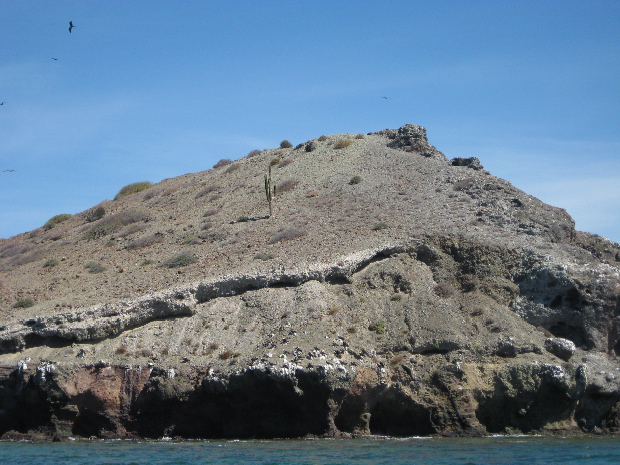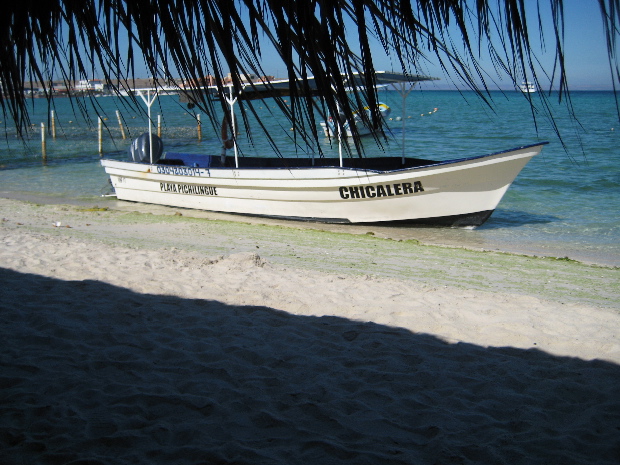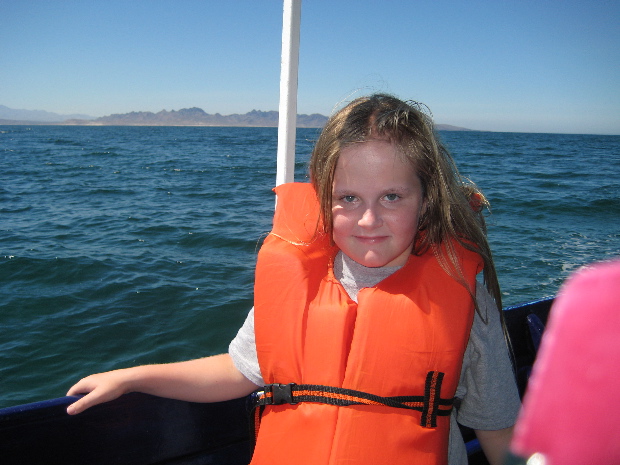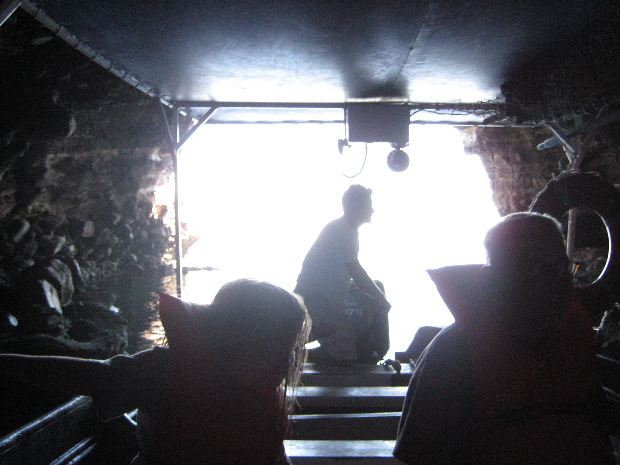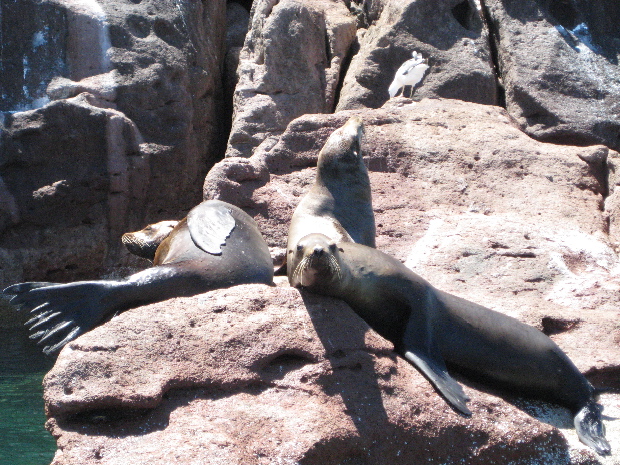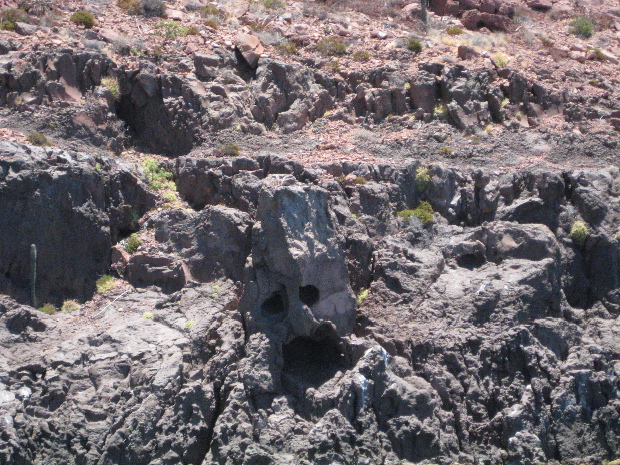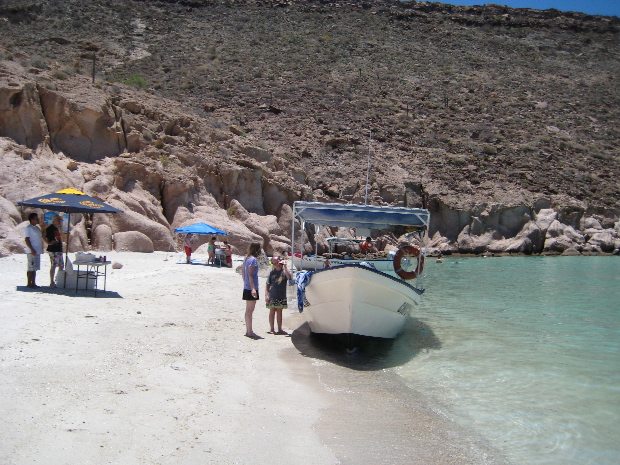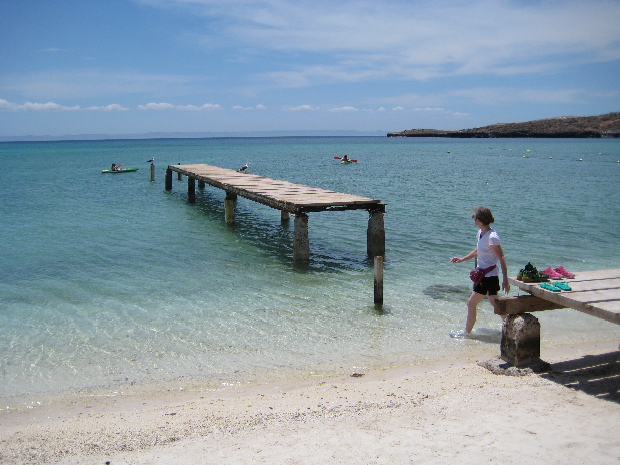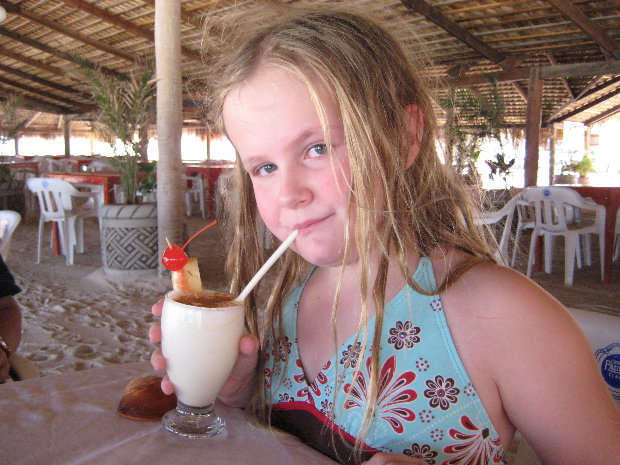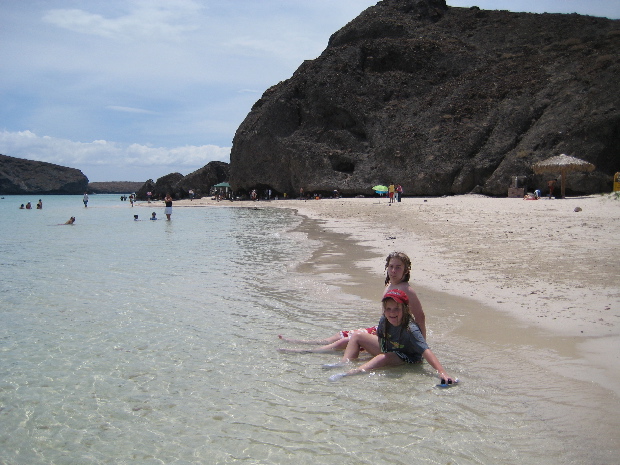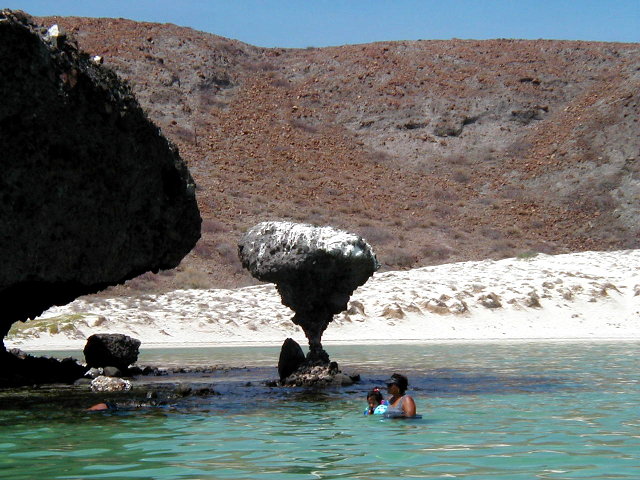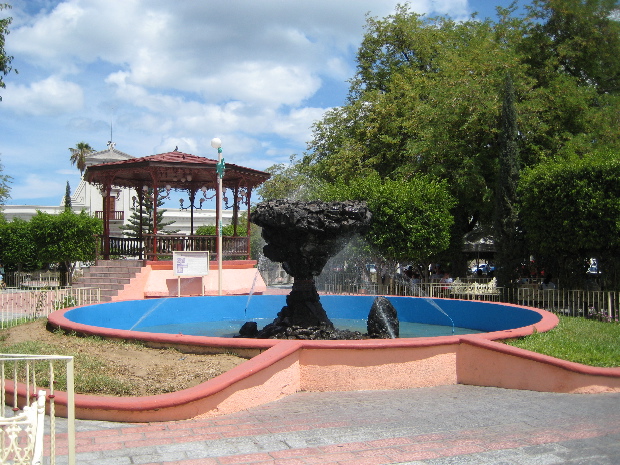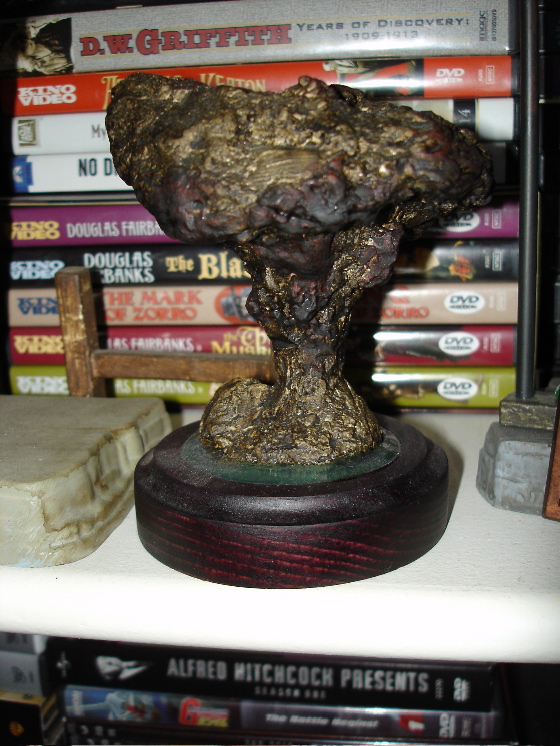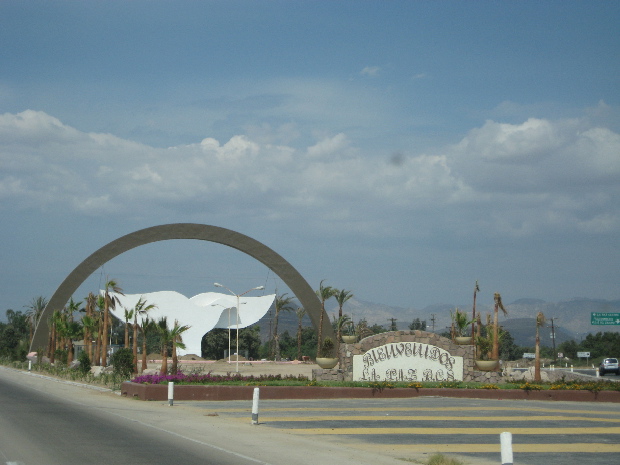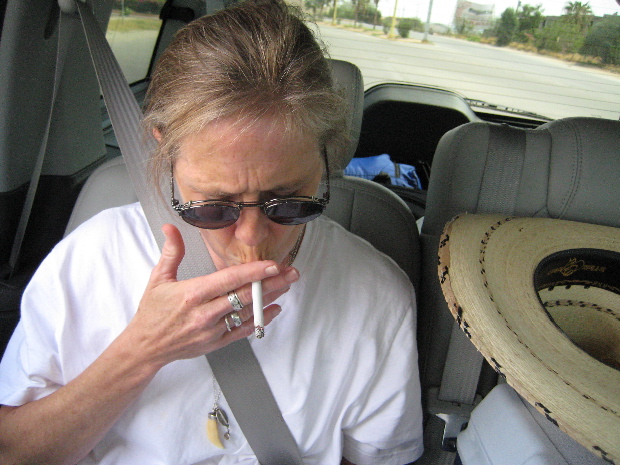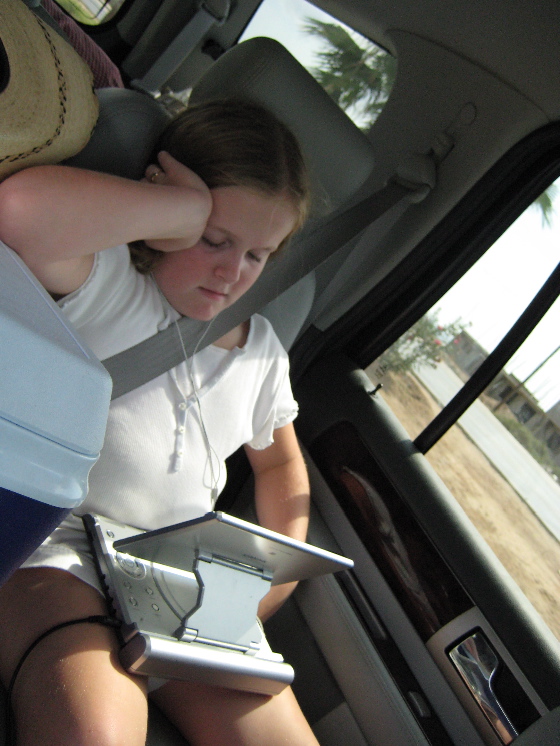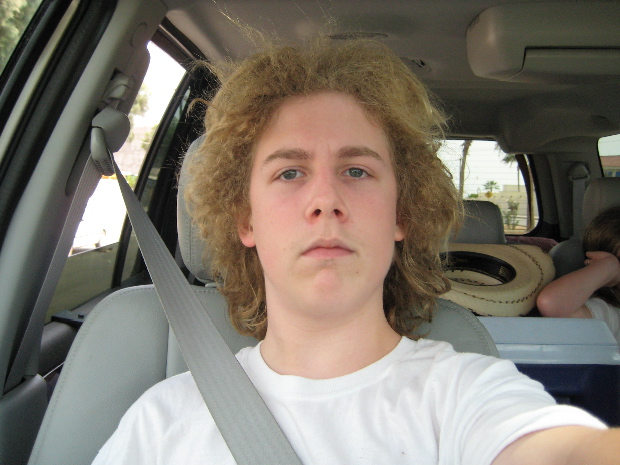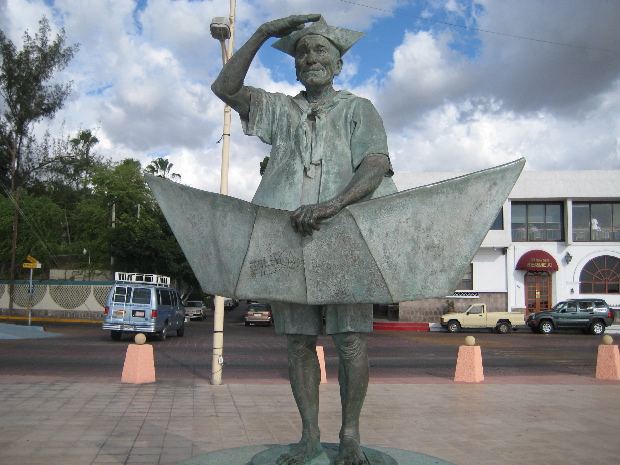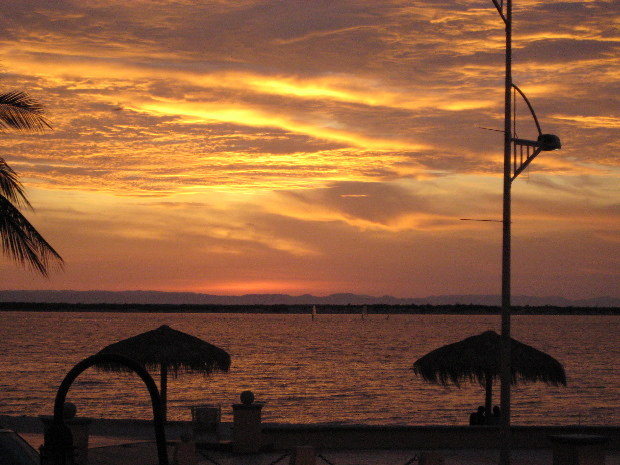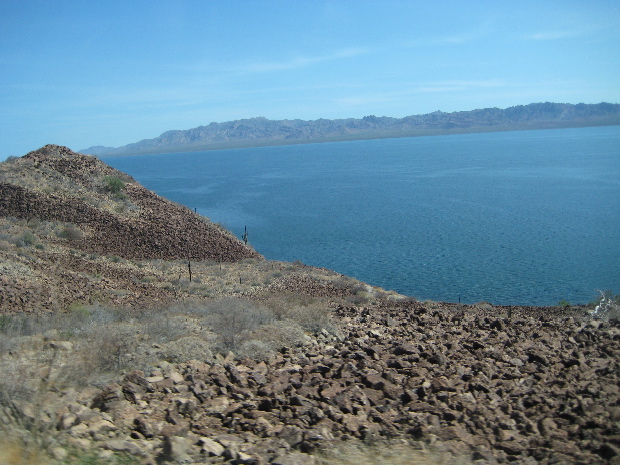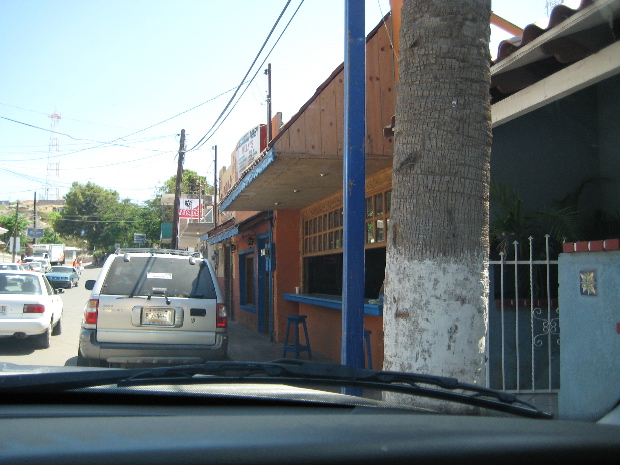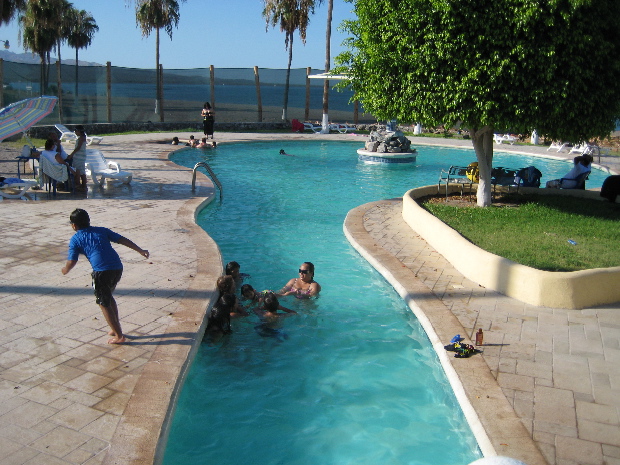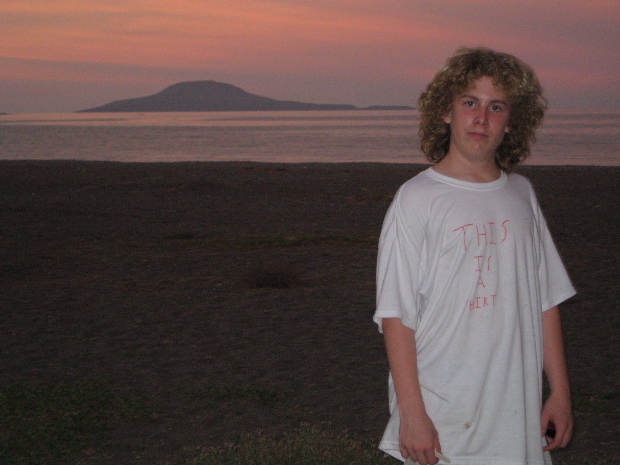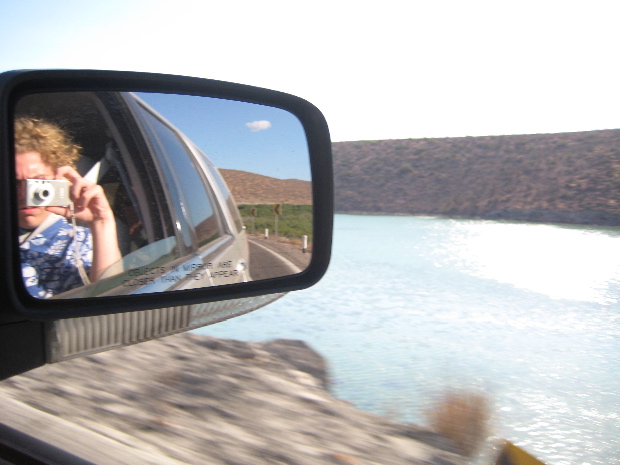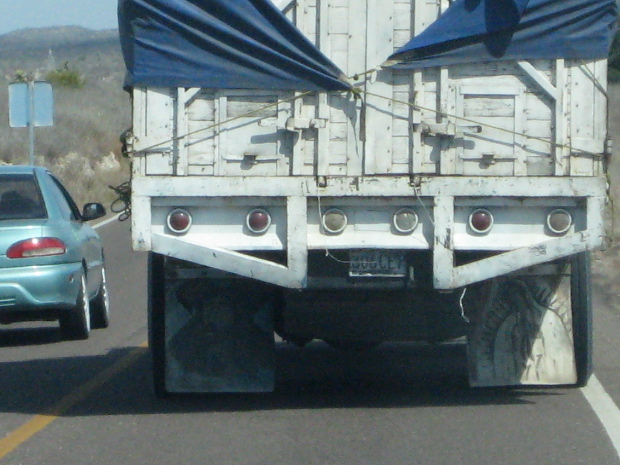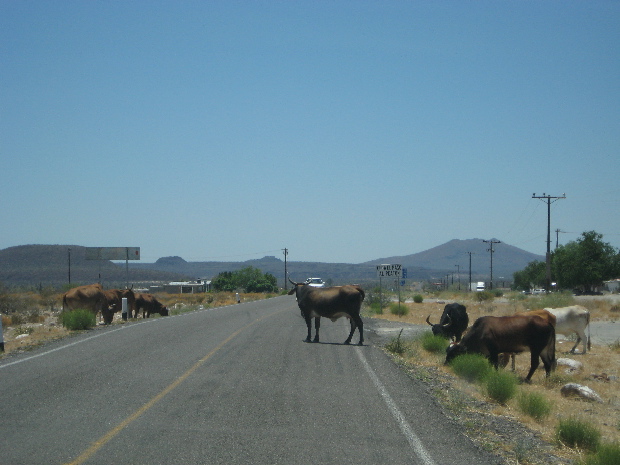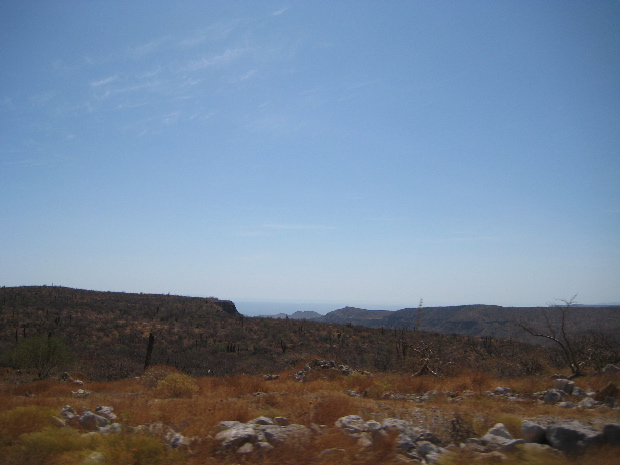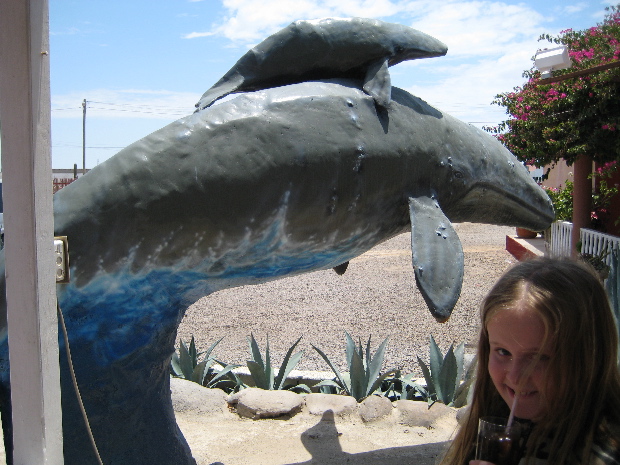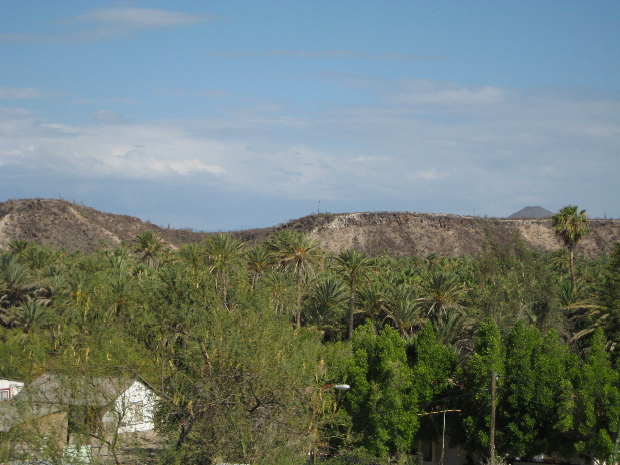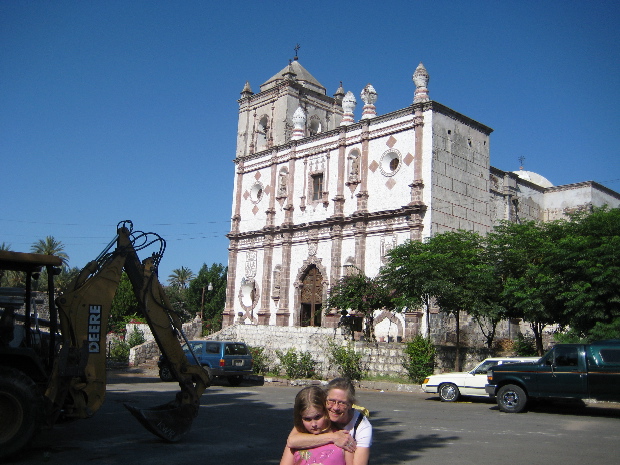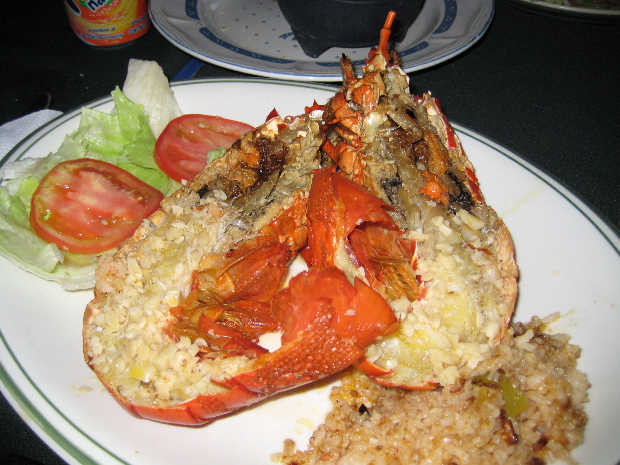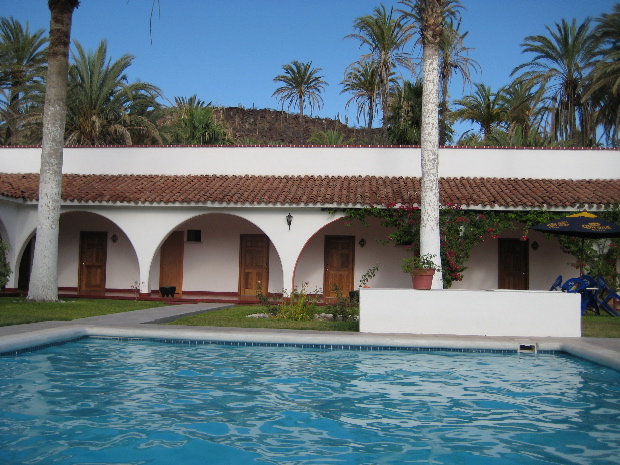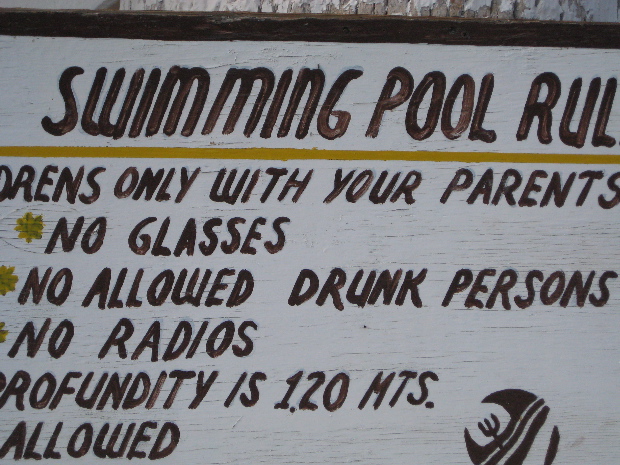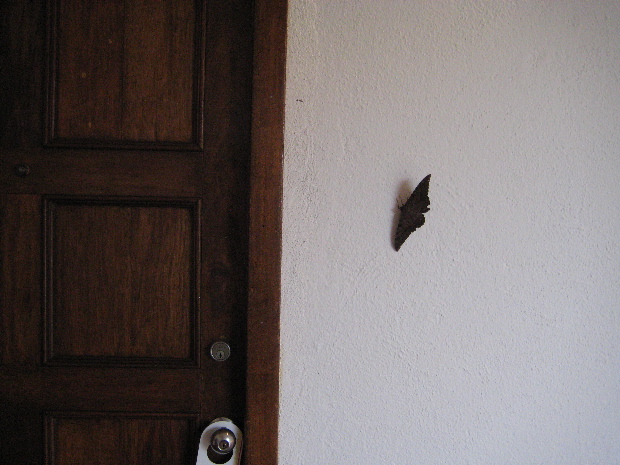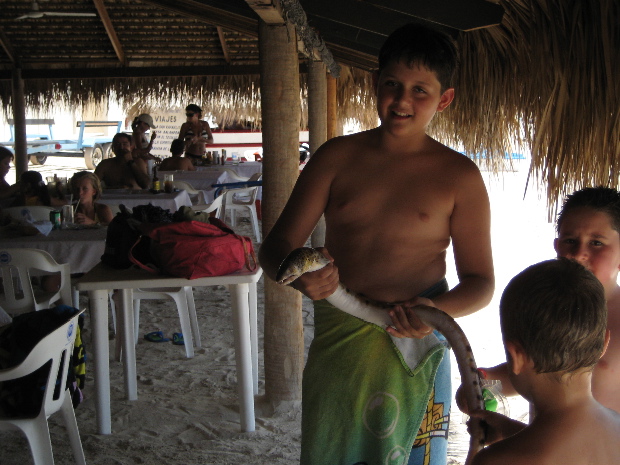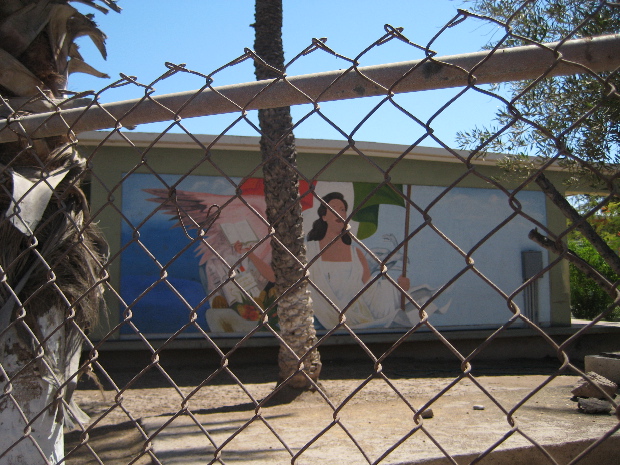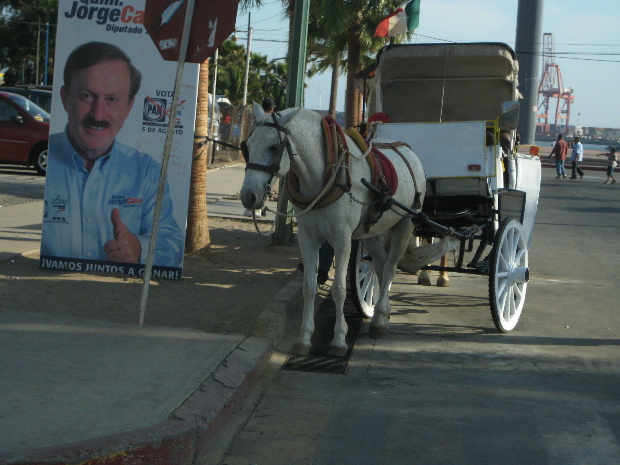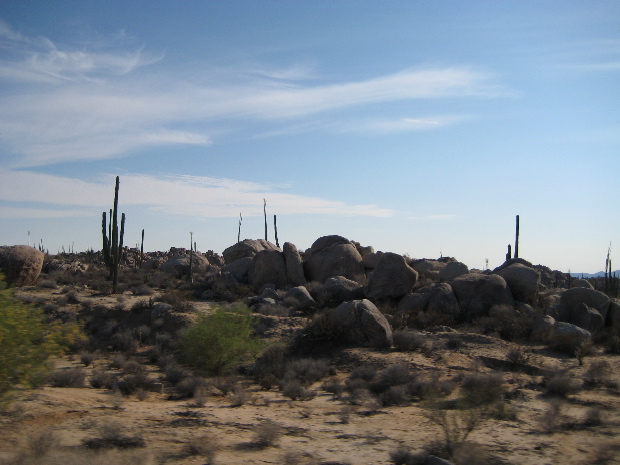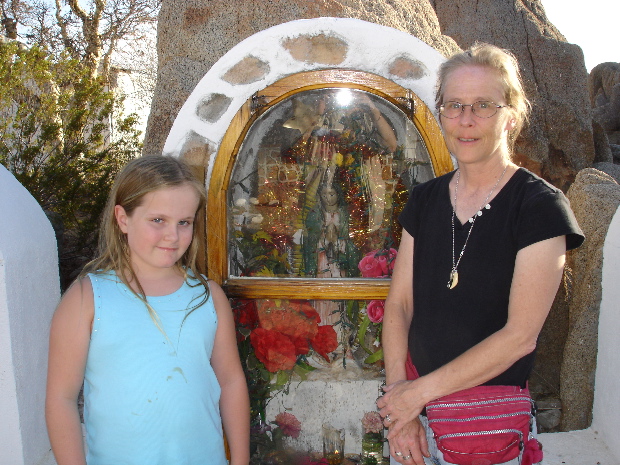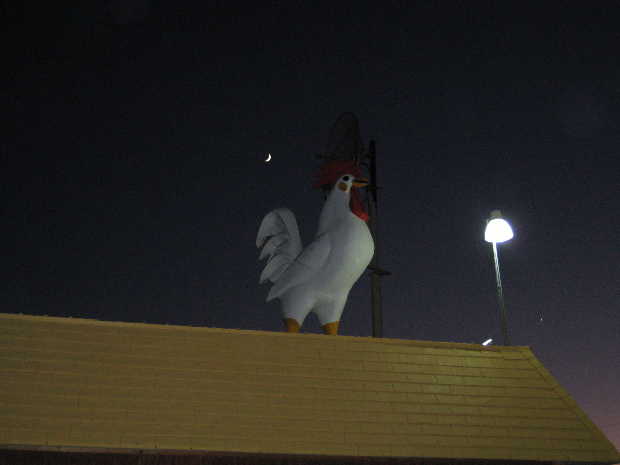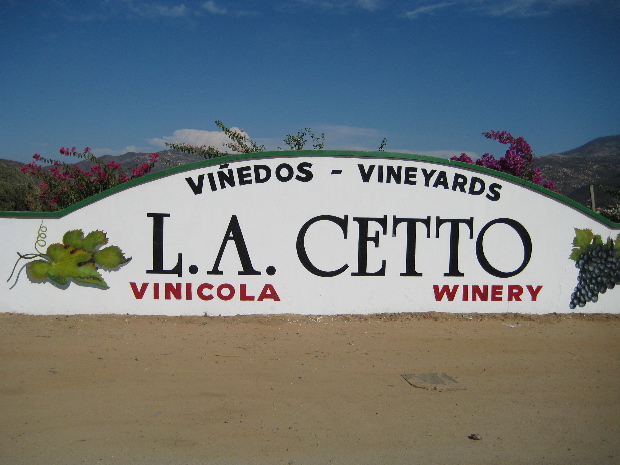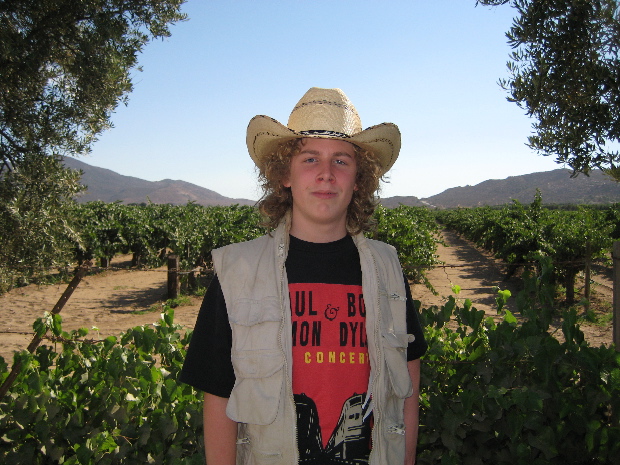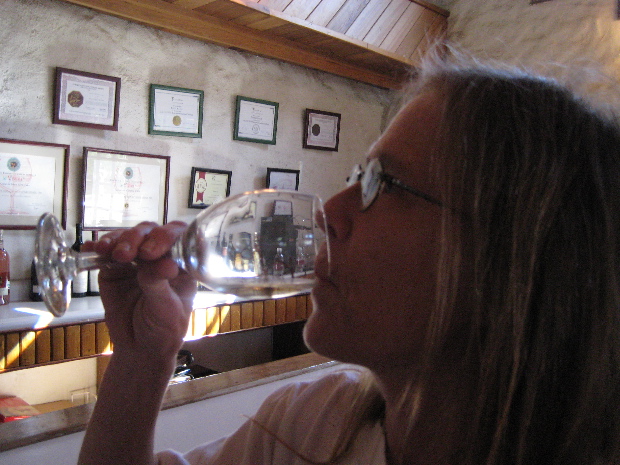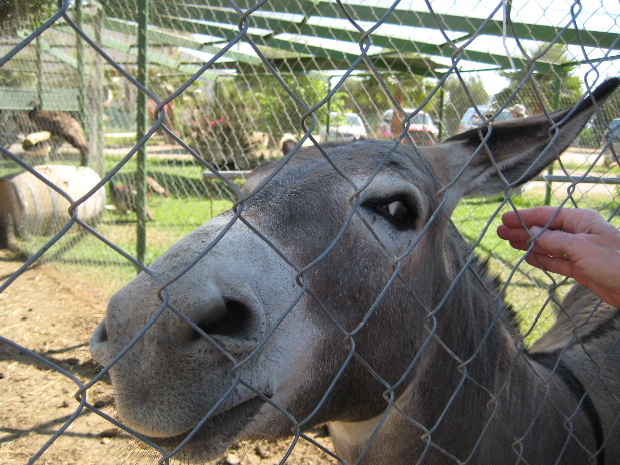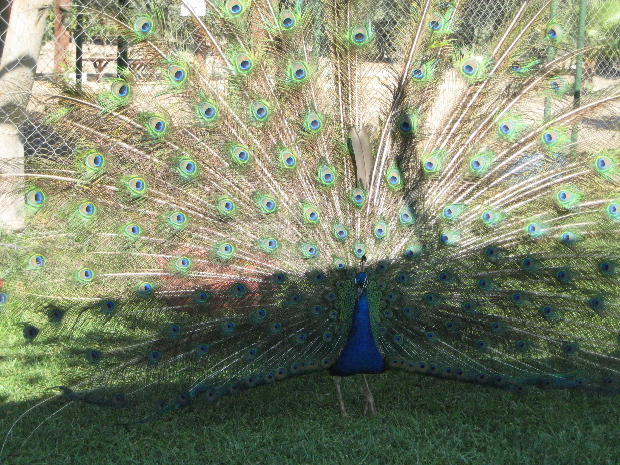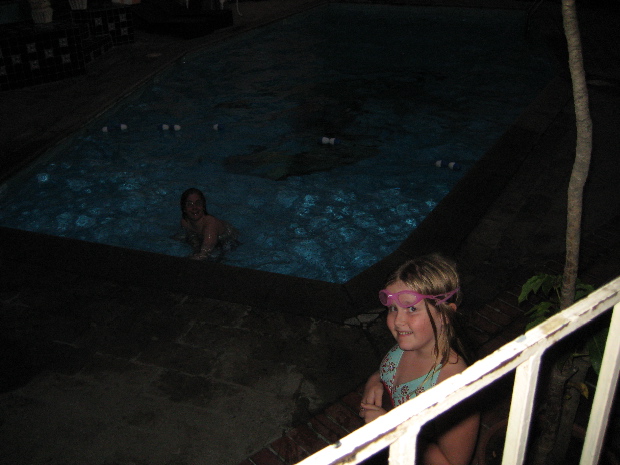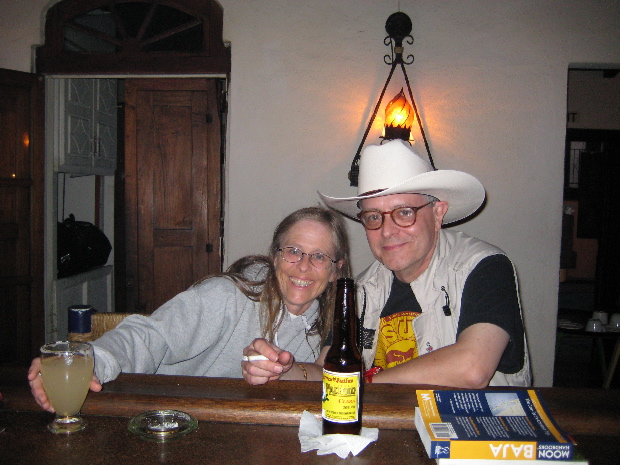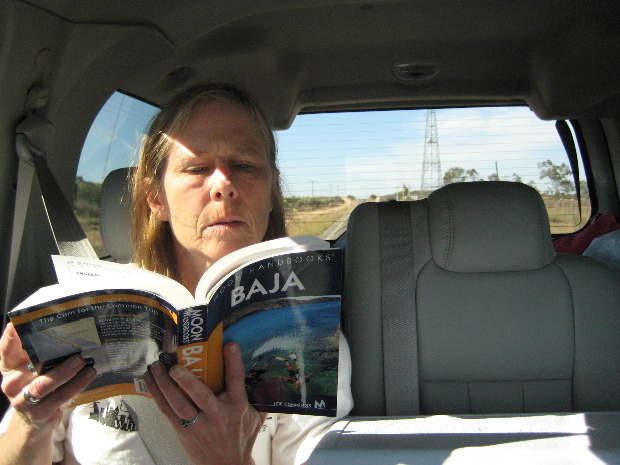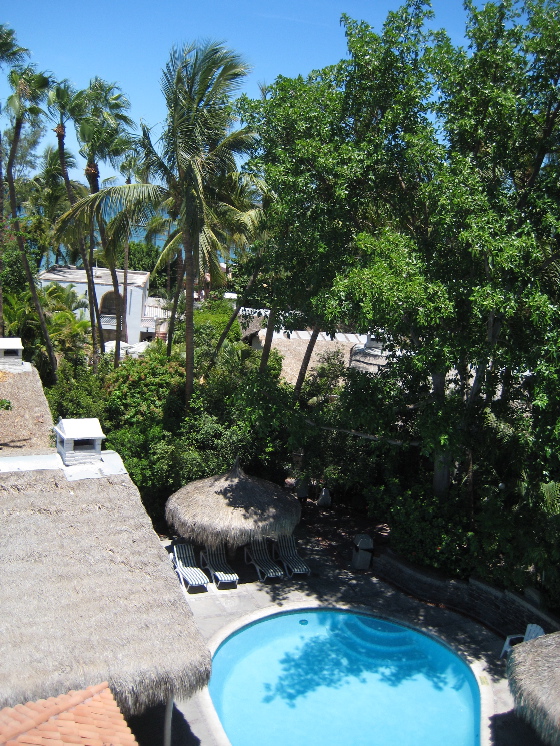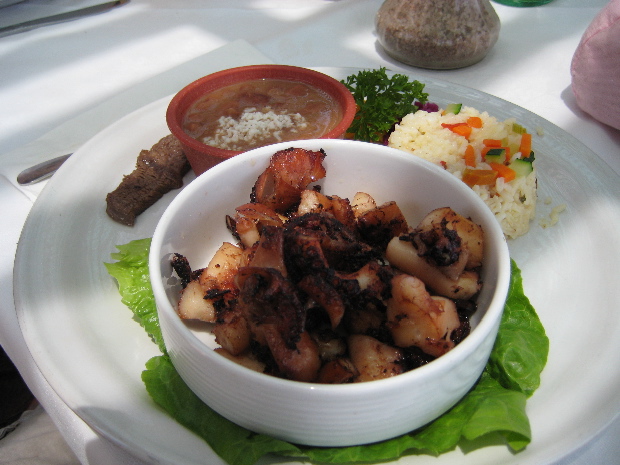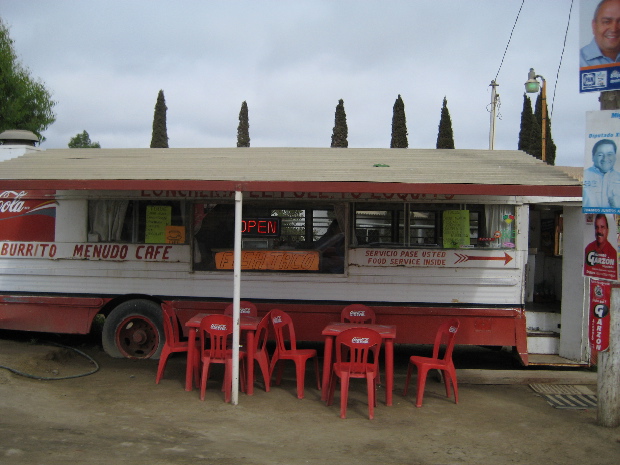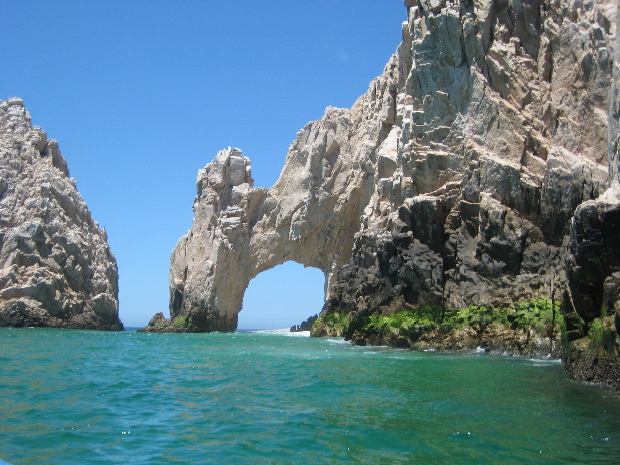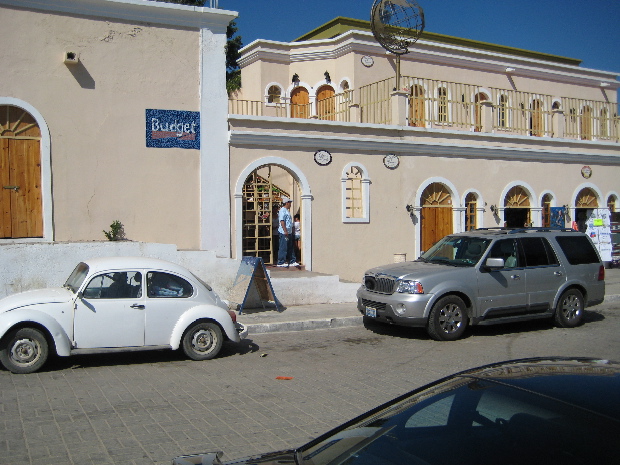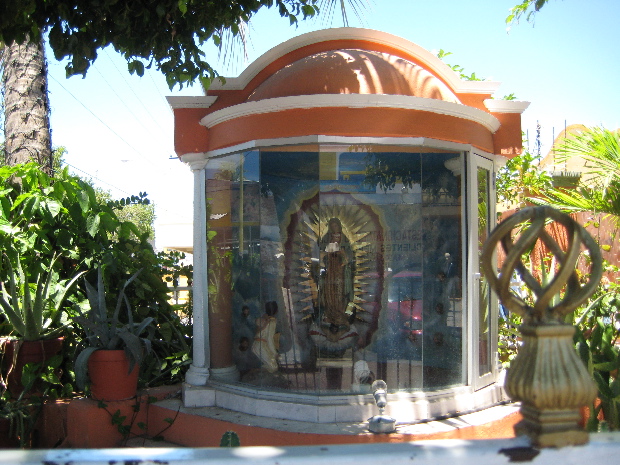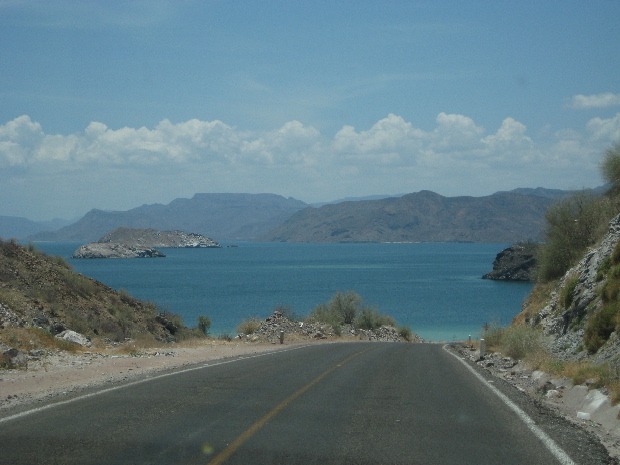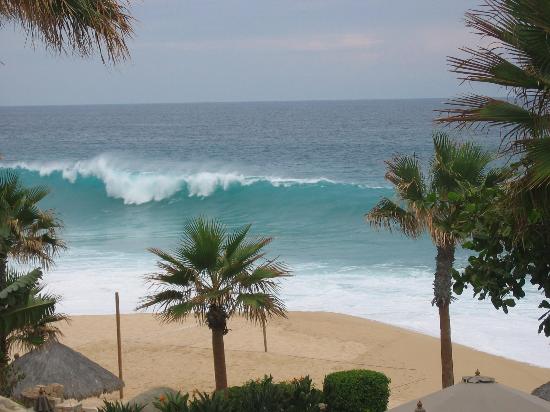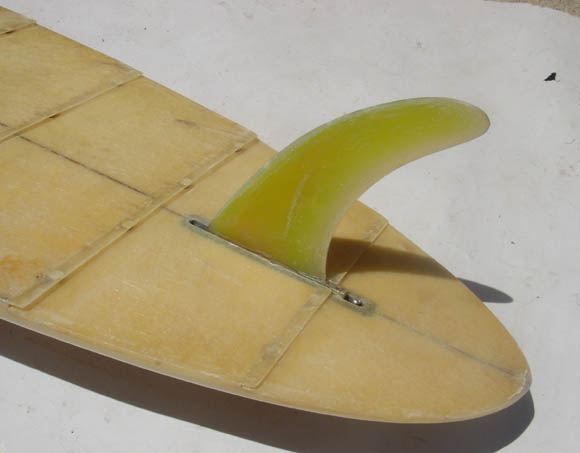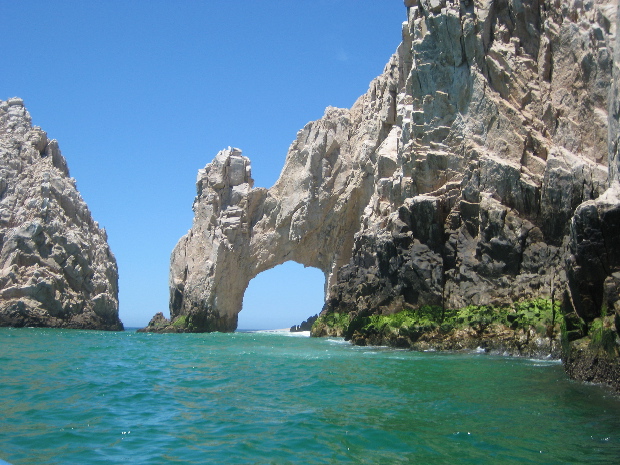
I
was leery of visiting Cabo San Lucas, reputed to be an outpost of
Orange County, but El Arco is there, the rock arch (above) that marks the
bottom of the Baja California peninsula, and it seemed unthinkable to
have driven most of the length of the peninsula and not visit its
terminal point, where the waters of the Pacific meet with the waters of
the Mar de Cortés.
We decided to make a beeline for land's end, see the cape, and head
straight back to La Paz. This turned out to be easier than
expected because there's a new road to Cabo San Lucas from La Paz
which runs down the Pacific side of the peninsula. (Mexico 1,
formerly the only paved route from La Paz to the cape, runs down the eastern shore of the peninsula and is a bit longer.)
The new road on the Pacific side is in superb shape, allowing for faster speeds than
normal, and we made it to Cabo San Lucas well before noon. The
town of Cabo San Lucas still has some charm, but it's ringed about by
hideous condo compounds — enclaves for people who want the views but
don't want to live among Mexicans, in anything resembling Mexican
culture. In forty years the whole of Baja California will
probably be encrusted with these compounds, as the Pacific coast above
Ensenada already is. Go see it now, before the
yuppie stain grows insupportable.
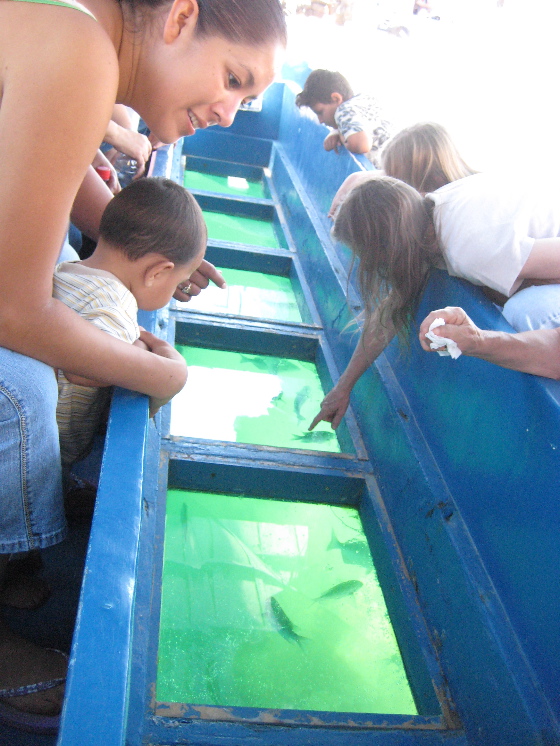
The tip of the cape can only be visited by sea, unless you're an expert
rock climber. We rented places in one of the glass-bottom
superpangas that take tourists out for a look. Fortunately the
other passengers were one large extended Mexican family, cheerful and
friendly and good company.
As we motored out of the harbor we were greeted by the strange and
nauseating sight of huge party boats filled with tourists drinking and
listening to bad pop music from live bands blaring their sounds out
over huge amplifiers. “We're having an experience — we're having
fun now!” was the message. Not. “We might as well be in Las
Vegas!” was more like it.
El Arco looks as though it might have been designed for dramatic effect
and beauty by some 19-Century landscape artist like Frederick Law
Olmstead. It's a most appropriate and theatrical punctuation mark
at the end of the great peninsula. Just beyond it you can
actually see the light green water of the Mar de Cortés mix with the deeper
blue of the Pacific.
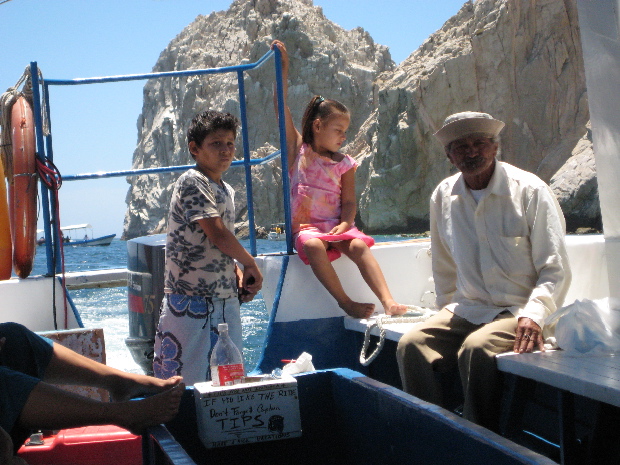
The captain of our panga had his wife and kids and father on board —
his oldest son took the helm on the ride back to the docks. His
father beamed at him and made sure we all saw how well he was doing.
We decided not to tarry in Cabo San Lucas but headed back
towards La Paz and stopped about halfway there at Todos Santos for
lunch. Todos Santos is a lovely little town that's become
something of an artists' colony. We looked forward to visiting
the galleries there, but they were all closed, because we came on
a Sunday. You would think that Sunday would be the one day of the
week most likely to bring tourists into the galleries, but there is
obviously a higher law at work here — the Lord's day, and the day of
rest, trumping commercial concerns.
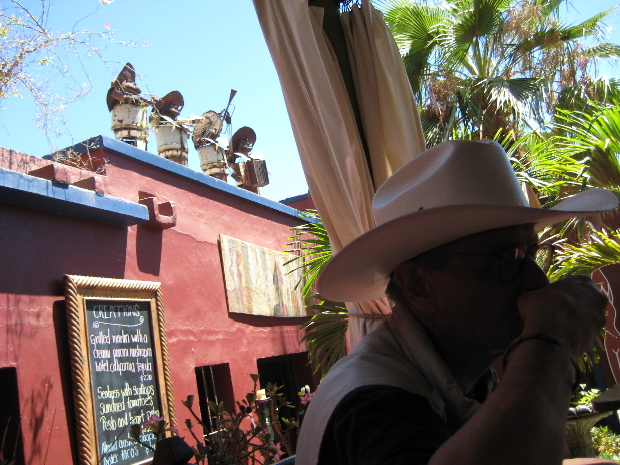
We did have a fine lunch at the Hotel California, a charming place
that
is often visited by Americans on the mistaken assumption that it has
some connection with the Eagles' song. Harry had the Mexican
equivalent of surf 'n' turf — a plate of shrimp and carne asada tacos.
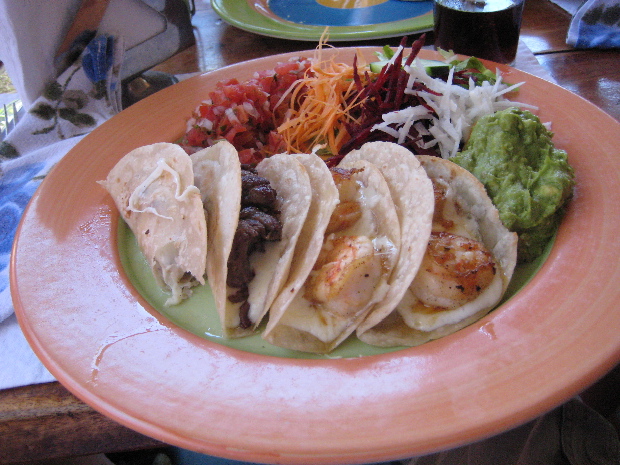
We got back to La Paz before dark, in time for drinks at sunset on the terrace of the Hotel Perla.
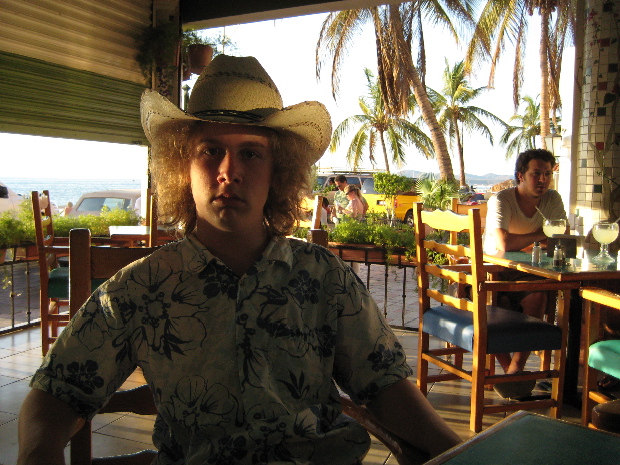
We were happy we'd visited Cabo San Lucas,
and land's end — even happier that we didn't have to spend the night
there.
For previous Baja California trip reports, go here.
[Photos © 2007 Harry Rossi]

